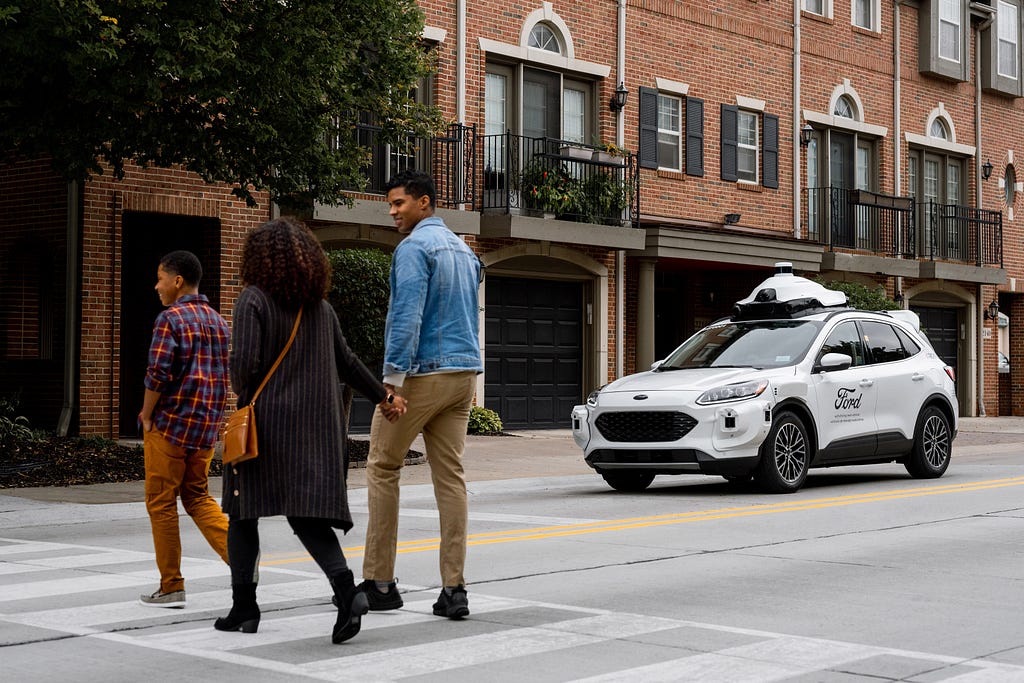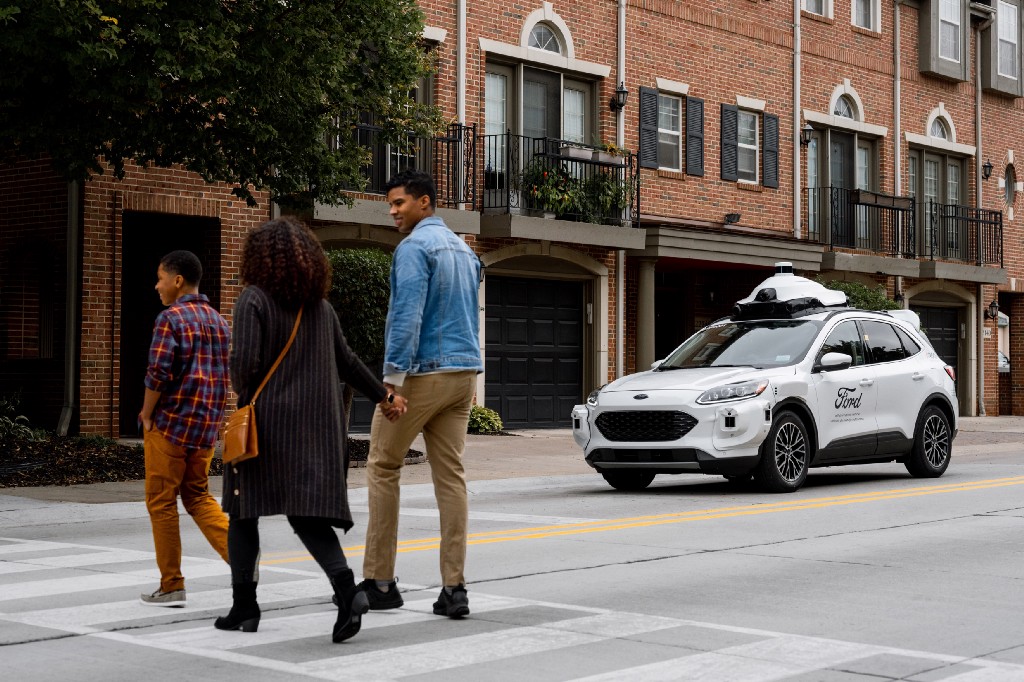By Scott Griffith, CEO, Ford Autonomous Vehicles LLC and Mobility Businesses

Over the last several decades, Ford and the rest of the auto industry have spent a vast amount of resources developing robust, comprehensive processes to ensure we design and deploy safe vehicles, because we care about the safety of our customers.
That same mindset dominates how Ford approaches the introduction of self-driving cars. We believe that self-driving vehicles present an opportunity to help improve safety on our streets by reducing some part of the roughly 94 percent of crashes that the National Highway Traffic Safety Administration estimates are due to human recognition or performance errors. The agency found there were more than 2,800 fatalities and an estimated additional 400,000 people injured due to motor vehicle crashes involving distracted drivers. Our hope is that self-driving cars can help improve this situation as well.
Of course, there’s a very obvious distinction between vehicles with humans at the helm and those without. Vehicles driven by humans have been fine-tuned and enhanced over time to help improve driver behavior, but the challenge for self-driving cars will be to manage all driving operations on their own — making decisions and performing maneuvers to navigate through numerous scenarios. Just as decades of experience have given us safe and reliable development processes for human-driven cars, we need to draw upon that experience and develop the same processes for self-driving ones.
That’s why we’re so excited to have Chris Gerdes assist the team at Ford Autonomous Vehicles LLC. In his new position as safety advisor to Ford, Chris will play a meaningful role in the creation of these safety processes — the very processes that will help us understand when we can be confident that our self-driving vehicles are safe and ready for deployment.

Chris is uniquely positioned to help guide Ford in its self-driving vehicle development efforts. As the co-director at the Center of Automotive Research at Stanford University, his laboratory studies how cars move, how humans drive and how to design future vehicles that can drive themselves. In addition to his expertise in mechanical engineering and his continued research at Stanford, Chris served as the U.S. Department of Transportation’s first chief innovation officer in 2016, and was part of the team that drafted the country’s first federal automated vehicle guidelines.
At his Stanford lab, Chris and his students explore how to develop cars that can avoid collisions, where possible through the laws of physics. This research could result in significantly different control systems in self-driving cars than we’d find in human-driven vehicles. For example, modern stability control systems may restrict how a vehicle manages an evasive lane change maneuver so the average driver avoids spinning out, but at the same time they limit some maneuvers that expert human drivers can perform to avoid collisions.
Would altering or removing those control systems give self-driving vehicles more capability to make decisions and improve their maneuverability? That’s one area we’re aiming to improve our understanding — learning lessons from the very best human drivers and turning those lessons into algorithms that can be deployed on self-driving cars. That way we can ensure that if there is an unexpectedly icy road or a pedestrian that suddenly steps out into traffic, the car can very reliably use all the friction on the road to help move out of harm’s way.
How Ford’s Next-Gen Test Vehicle Lays the Foundation for Our Self-Driving Business
As Ford’s safety advisor, Chris will work closely with Ford’s Government Affairs, Automotive Safety and legal groups, as well as the Autonomous Vehicle System Engineering (AVSE) team. Together, Argo AI and our AVSE teams collaborate to draw upon the respective strengths and experiences of each team, with the goal of creating a safe and reliable self-driving system. There are challenging situations drivers face every day and the team needs to work through various scenarios to determine the logic for how we want the self-driving vehicle to handle similar situations.
Like those of us at Ford, Chris believes strongly in the impact self-driving vehicles can have on safety and transportation accessibility. Ensuring self-driving cars with no brake pedals or steering wheels cars are safe, trusted and reliable will be the defining challenge of the auto industry. The technology is still in its formative phase, but we have the opportunity to develop safe processes that can help us harness its power to improve our customers’ lives. Having the benefit of Chris’ background, expertise and guidance, Ford will be even more prepared to tackle that challenge.
Playing It Safe. There Is No Other Way to Launch Self-Driving Cars was originally published in Self-Driven on Medium, where people are continuing the conversation by highlighting and responding to this story.
